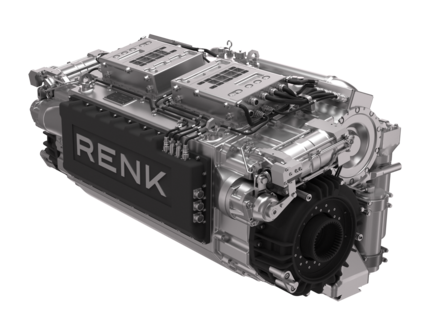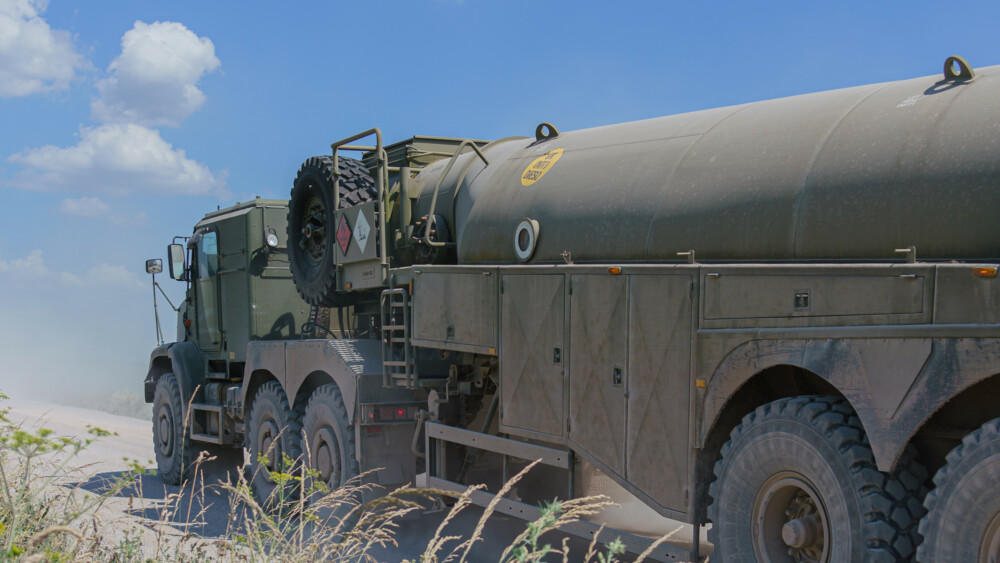Fuel efficiency is not merely an environmental or economic concern; for military operations, it represents a crucial strategic element. Efficient fuel use in military vehicles can significantly enhance operational range, reduce logistic burdens, lower emissions, and cut costs, thereby improving overall military readiness and capability.
Fuel consumption - a strategic factor
The operational and logistic complexities of maintaining and deploying large military vehicle fleets are profound. High fuel consumption not only escalates costs but also increases the logistical footprint, making fuel convoys vulnerable to enemy attacks. Historically, these convoys have been high-value targets in conflict zones, underscoring the strategic need to minimize such risks through enhanced fuel efficiency¹.
Fuel efficiency – costs and environmental concerns
According to US military sources, the costs for a gallon of gasoline is usually a few USD. However, costs can climb up to USD 400 per gallon, or in some cases even USD 1,000², when transportation costs and fuel protection costs are included. Therefore, improving fuel efficiency is not only a strategic priority but also a budgetary concern.
Another factor, that is becoming more relevant, is the environmental impact of military vehicles. To give an example, the world’s combined military is said to produce around 5% of the world’s total annual carbon emissions³. The US military alone consumed 82.3 million barrels of fuel in 2022. And with 59 million tons per year, the US military is said to have a bigger emissions footprint than Sweden⁴. Demand for lower emissions of military vehicles have been stated by governments, and leading Western armies have already developed environmental strategies to reduce the consumption of fossil fuels in the next years.

Future directions and policy implications
Looking ahead, the military is encouraged to continue investing in research and development of energy-efficient technologies. Programs like the Joint Operational Energy Initiative and Tactical Vehicle Electrification Kit exemplify ongoing efforts to integrate energy efficiency into military operations strategically and cost-effectively⁵ ⁶.
In Europe, the British Army is also conducting several projects in this area. For instance, the TD6 program⁷ explores the application of hybrid technology in various wheeled vehicles. Additionally, several Land Rovers have been converted⁸ to fully electric vehicles as part of a trial to evaluate the benefits and challenges that silent drive and electrification bring to military operations.
Fuel saving - supporting technologies
When applied to military vehicles, limiting the consumption of fossil fuels serves more than just one purpose and is one of the most prominent development goals in the years ahead. There are several technology approaches to saving fuel, some of which are already available.
Anti-idle technology
One of the most possible solutions for fuel-saving vehicle upgrades (tactical vehicles) are hybrid conversion kits with anti-idle capability. Anti-idle systems have a start-stop function that cuts the main engine when idling is extended. The conversion kits include electric batteries, generators, inverters, and power management systems. They power vital on-board systems while the main engine is turned off.
The US Army has found that their medium tactical vehicles spend almost 80% of runtime in idle mode⁹. Operating a fleet of 60,000 medium tactical vehicles, the US could save approximately USD 380 million annually¹⁰. Current anti-idle testing projects aim for a ratio of 20/60 for anti-idle mode, which means that the main engine charges the battery system for 20 minutes, enabling it to run for 60 minutes (non-propulsion).
An important aspect of anti-idle technology is its ability to manage unique operating conditions that military vehicles often face, such as extreme temperatures.

Hybrid drive trains
Taking the hybrid solution a step further, some combat operations require advanced hybrid capabilities that involve electric propulsion. Such capabilities will typically be used for Cold Boost vehicle movement, from non-idle silent watch to rapid advance or rapid retreat. In such cases, the main engine and transmission Fahrzeuggetriebe Ein Fahrzeuggetriebe passt Drehmoment und Drehzahl an und überträgt die Motorleistung auf die Antriebsräder. , which have cooled down during silent watch, cannot be operated straight away, which adds to the vehicle’s vulnerability. The electric propulsion motor of an advanced hybrid system will move the vehicle until the main engine is able to provide power.
With today’s proven technology, including electric motors that are connected to the drive train of the main engine, modern-day hybrid solutions are more than capable of helping to achieve fuel-efficient performance.
Conclusion
As the military landscape evolves, so too must its approach to operational energy. By investing in fuel efficiency and advanced energy technologies, the military not only enhances its strategic capabilities but also supports broader environmental and economic objectives. Hybrid drivetrain technologies do lead to a significant reduction of fuel consumption in military vehicle fleets. In addition, they offer various abilities and features to safeguard the mission and improve the protection of both crew and vehicle.
Related topics

Drive-by-wire enhances safety, flexibility and efficiency for military vehicles

Why armed forces push hybrid drivetrains

ATREX

In case of further questions get in touch with our correspondent.
